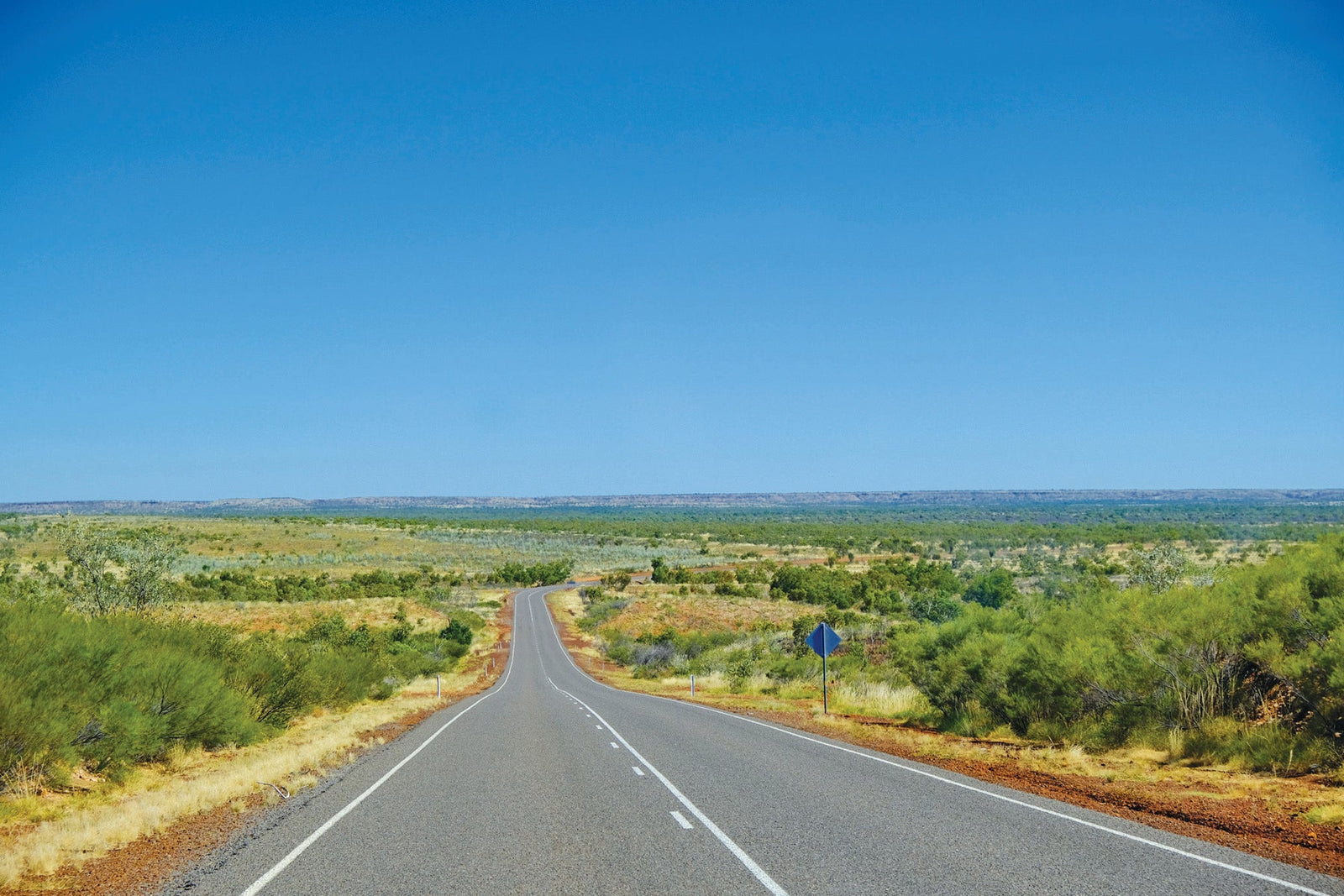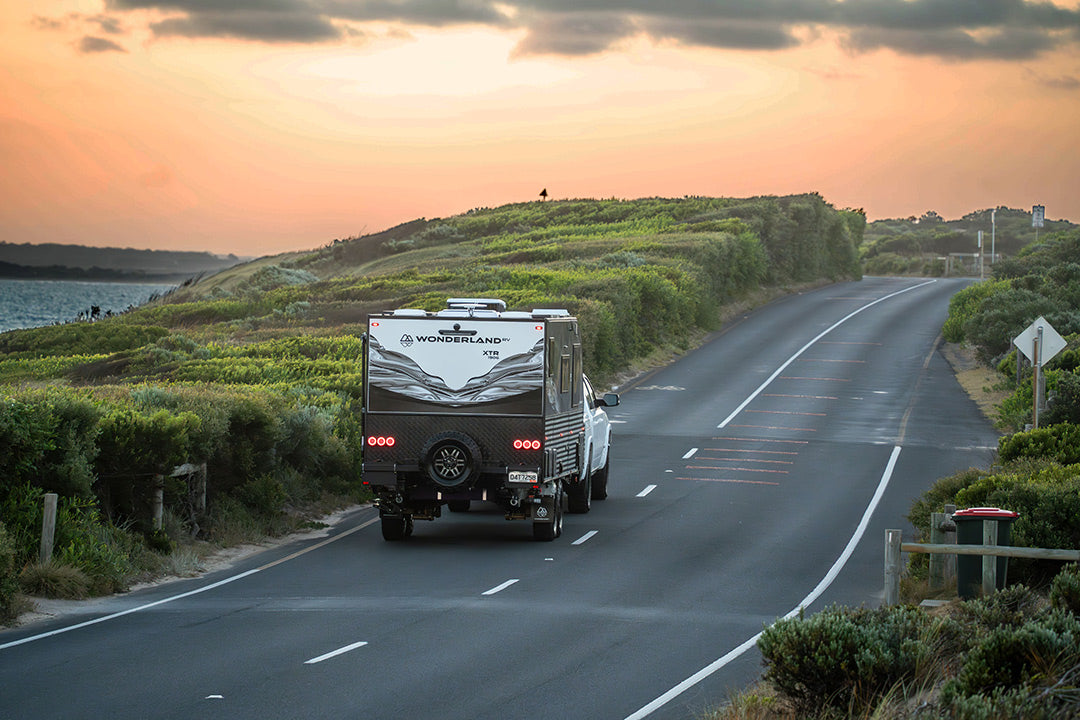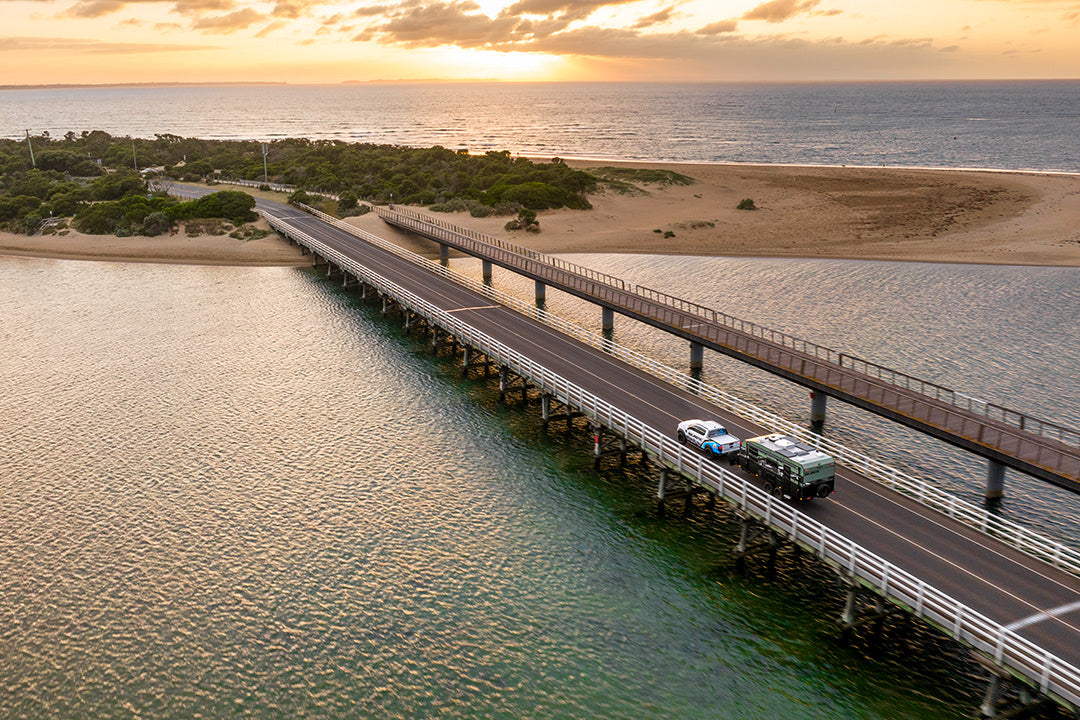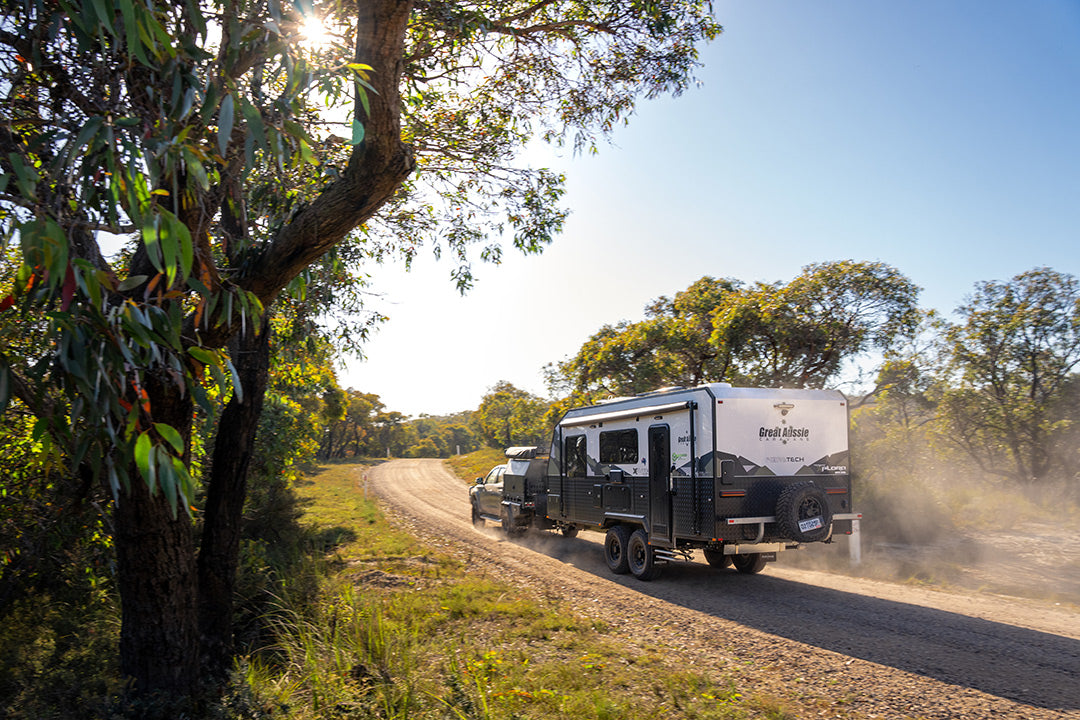Trekking the Outback

A spectacular rocky outcrop in the middle of nowhere seems a fitting place to start a story about an outback trek through Northern Territory.
In a landscape often dominated by wide open spaces and long stretches of bitumen reaching into the horizon, Karlu Karlu (Devils Marbles) is an ochre-stained oasis of geological evolution. It’s where massive granite spheres, smoothed and sculpted by nature over millions of years, defy gravity.
The term Devils Marbles came from Scottish-Australian explorer, John Ross, who led a survey team for the Overland Telegraph Line in 1870. “This is the devil’s country,” he said. “He’s even emptied his bag of marbles around the place.”
Many of the ‘marbles’ remain perched precariously on top of each other as if the Devil himself, is still holding on to them.
To the local Warumungu Indigenous people, who believe the rocks are the fossilised eggs of the Rainbow Serpent, this is an important historical site where four tribes from all over the country would meet and share Dreaming stories.
It’s a fascinating place to explore. Designated walks lead up and over the marbles to impressive views and interpretive signs explain how they came to be and how they have survived.
Stay: A volunteer-run campground at the base of Karlu Karlu will set you back about $4 a night. Get there early though, as sites go quickly with visitors wanting to catch stunning dusk and dawn views.
TENNANT CREEK
Tennant Creek with security fences and window grills adorning many buildings, looks a little grim at first, but take the time to explore and you’ll soon see a different picture.
The Indigenous art centre Nyinkka Nyunyu is a highlight with arts and crafts on show and for sale. A series of dioramas illustrate the history of the local Indigenous people and their lives in around Tennant Creek.
Resident artist Bevil Staley is an interesting character who loves a chat almost as much as he loves painting portraits. He spent years teaching Indigenous people to become teachers, and now paints portraits from photos he takes of Indigenous visitors.
The Old Telegraph Station is a tribute to early Europeans who helped open lines of communication across the country. Life was tough out here, and everyone had to be a jacks of all trades. They grew their own fruit and vegetables, killed their own meat, fixed equipment, shod horses, cooked and cleaned and played host to rare visitors.
Stay: The Outback Caravan Park has shady sites, a pool and concrete slabs to sit on (or do yoga like our neighbour). Happy Hour is a hoot at the open-air bar.
If you’d rather free camp, it’s only 17km to Kunjarra (The Pebbles), a site sacred to Indigenous woman. It’s where dancing and healing rites of the Munga Munga Dreaming take place, along with the ritual instruction of young girls.
Sunrise at Kunjarra is a little surreal. There are lots of people, but you feel isolated, in a good way.
NORTHWARD BOUND
Wide, open spaces, a few exciting patches of roadworks — even a set of lights — and then more wide, open spaces is what to expect heading north on the Stuart Highway.
The landscape is mostly low scrub with pockets of gum trees and yellow flowering shrubs brightening up the highway. You’ll see cattle and horses, big blue skies, red dirt and termite mounds that get bigger the further north you go. Some are even dressed up by passing motorists.
Birdlife is prolific. Wedge-tail eagles try to ignore passing traffic as they feast on roadkill while flocks of tiny birds dart away as we barrel through. Hawks circling above are constant companions.
The aptly-named Threeways Roadhouse, at the intersection of the Barkly Highway, (Overlanders Way), is where you can head east to the Pacific coast, south to Adelaide, or north, like us, to Darwin. With a bar, pool table, food, fuel and caravan park (with a pool) out back, Threeways is a roadtrain hub.
But if you’re looking for somewhere to stay, there’s an oasis just 77km up the road. Banka Banka Station runs up to 4000 cattle across 146,000ha but, as manager Sam McMurtrie explains, when times get tough, outback operators must diversify, and offering weary travellers a haven works well.
Amenities start with an old mudbrick building converted into a bar, cheeky seats made from old farm equipment, a campfire, fresh spring water, a dump point and a nightly happy hour where they cook damper.
Onward and upward through Renner Springs, Elliot and Dunmarra all offer a place to stay. The most popular spot, though, seems to be Newcastle Waters rest area. Maybe it’s the pink wildflowers drawing them in?
Just past Dunmarra, the Buchanan Highway leads west, eventually meeting up with the Savannah Way, skirting the bottom of the Kimberley. The Carpentaria Highway joins Stuart Highway from the east, just before Daly Waters. At the intersection is the Hi-way Inn, another roadhouse and campground.
DALY WATERS
The place every nomad says you must see but nobody can really say why.
Daly Waters is definitely quirky — a description that suits much of the outback. There’s not much here except the pub, lined with odd things punters have left behind like hats, shirts, money and bras — plus more people than we have seen gathered in one place in 18 months. What COVID?
Each night, the band plays and the famous ‘beef & barra’ dinner is served, but no-one can get a beer because the bar is chockers. It’s loud and boisterous and everyone’s having a ball.
Stay: You’re in for a big night so it’s best to stay, but don’t expect to ‘get away from it all’ — the campground is as busy as the bar. There are also two independent campground options across road.
CHANGING VISTAS
North of Daly Waters, the landscape changes. Hills and valleys mark the horizon, and the soil has a dark crimson hue. This is cattle station country and many of those have no fences so stay vigilant.
There are so many termite mounds now, they look like human-size communities.
LARRIMAH
Who can resist stopping to see pink panthers on pushbikes and gyrocopters at an outback pub, even if it’s just to ask why?
Expect a ‘why not’ answer, plus tales of pie wars and missing people. But is it all true? A pub sign says: 'Where the beer is cold, and the bull shit is free.'
The real stars though, are Shirley the cockatoo, and a tiny wallaby who loves a scratch.
MATARANKA
Soaking in warm water underneath a tropical canopy, I understand why Mataranka Hot Springs are so popular. The 32 degree water is said to have healing powers. At the very least, it’s a nice hot bath, with a lot of other nomads.
Access is via Mataranka Resort — a caravan park with a big outdoor entertaining area, pub, meals, even whipping demos. But you don’t have to stay there to swim.
If you prefer a more natural setting, head through town and turn right towards Bitter Springs in Elsey National Park to swim in the warm crystal-clear river. Take a pool noodle and let the current push you along past water lilies, palms and giant golden orb spiders. Mother Nature’s theme park ride through the greenery, with birds and insects providing the soundtrack, is a pretty cool (or in this case, warm) experience.
Stay: Mataranka Resort or free camp at King’s Rest Area halfway to Katherine.
KATHERINE
With so much to see and do, the Visitor Information Centre should be the first stop. Then Katherine (not so) Hot Springs are a delight in the middle of town.
The Outback Experience offers a glimpse of life on a cattle station and shows there’s more to country singer Tom Curtain than winning multiple Golden Guitar awards. Tom and his team demonstrate how they use confidence-building techniques to train horses and working dogs.
Nitmiluk Gorge is a must. Cruises show off three of this 120 million-year-old 13-gorge sandstone system. Between each gorge, rock art thousands of years old depicts the long history of the Jawoyn people.
You can swim from the second gorge up, but only in the Dry season after the salt-water crocs have been removed. Otherwise there are plenty of walking trails, including a 900m almost vertical climb to the lookout.
Stay: Nitmiluk Gorge Caravan Park. A great set-up with plenty of sites, a pool, pizza nights and within walking distance of the gorges and cruises.
LELIYN (EDITH FALLS)
Another great find with walks and waterfalls, and glorious sunsets with cliffs glowing a burnt orange and reflecting on still waters.
The 2.8km Loop Walk goes to the top pool and lookout. It’s a hard, steep hike with lots of steps but the views over bush and the escarpment, down to the waterfalls and rock pools, are spectacular.
Stay: Get in early for a campground site or, if you arrive late like us, head back 20km to the free camp by the billabong at the highway turnoff. The serenading frogs and birds won’t disappoint.
Tip: If the sign at the turnoff says the campground is full, believe it.
ON TO DARWIN
Edith Falls to Darwin is an easy 300km drive along the freeway past regular patches of controlled burns, over the massive Ferguson River, through Pine Creek and with a stop in Adelaide River for a weekend market fix.
The road to Batchelor and Litchfield National Park is tempting, as is a detour to Kakadu. Litchfield offers crystal-clear (croc-free) swimming holes, waterfalls, bushwalking trails and huge termite mounds. The top spots are Buly Rockhole, Wangi Falls and Florence Falls — but that’s for another trip.
For the record, termite mounds are now enormous and elaborate, they resemble cathedrals. We have passed 27 road trains just today (going the other way) and 65km out of Darwin, we welcome back hectares of mango plantations — gotta love the tropics!
Stay: If you don’t want to go all the way to Darwin, there are rest areas at Bridge Creek and Coonalie Creek.
It takes about three hours to get to Discovery Holiday Park Darwin in Winellie, a handy spot just 10km from the city and right on public transport. It has two pools, two laundry areas and very civilised slabs for RVs.
FAST FACTS
WHERE TO START
Karlu Karlu is 400km north of Alice Springs, 1100km south of Darwin and 120km south of Threeways at the turnoff to Barkly Highway which leads east to Cairns.
WHILE YOU’RE IN DARWIN
(Some of the) Must-do experiences:
- Street markets at Mindil Beach or Parap.
- Stokes Hill Wharf for food, fishing and history – The Royal Flying Doctor Service Darwin Tourist has fantastic VR experiences that will give you a unique insight into the bombing of Darwin.
- Darwin Waterfront is a bustling hub with lots of food and drink options and a spot to swim.
- If you’re into Indigenous art, check out:
- MAGNT, Bullocky Point — exhibitions and a giant stuffed croc.
- Mbantua Gallery, Smith St Mall for art from Central Australia’s Utopia Region.
- Aboriginal Fine Arts Gallery for bark works, hand-woven baskets and carvings from Arnhem Land and the Central and Western desert regions.
- Aboriginal Bush Traders, Lyon’s Cottage — a not-for-profit organisation selling ethically sourced and sustainable products that directly support local Indigenous communities.






